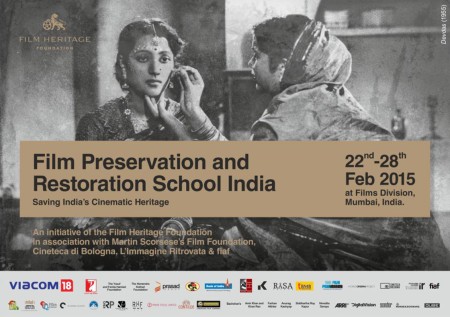Thank you so much to Fritzi, Aurora and Ruth for hosting the Classic Movie History Blogathon. This was fun, and hopefully they will host it again. Go check the link, there are many interesting blogposts there on the Silent Era movies! I know I will!
It is not a wonder that the movie-making industry in India took off as soon as the concept of filming was introduced. We love stories! India has a long tradition of keeping stories alive through the Written Narratives and the Oral Culture that predates it. The learned as well as the regular folks everyone knew their stories. And if there was a chance to put it a magic box and reproduce it time and after time, who would say no?
But in a country that is decidedly different, the themes of the movies may be predictable but the journey of film-making is very interesting, to say the least.
The Lumiere Brothers had their first show in London in 1895, and a year later in India in erstwhile Bombay. Almost immediately there was a burst in trend of making reels. Enthusiastic photographers from all over India experimented with this new concept of “pictures in motion”. But it was mere chronicling of events, the vision to use filmmaking for storytelling was acquired more than a decade later.
Dadasaheb Phalke: the man who made the first Indian movie and almost went blind for it.
 A full length film called “Shree Pundalik” was first made in 1912 by a person called Dadasaheb Torne but it was not qualified as a feature film as it was a mere recording of a play. The credit for making the first Indian feature film goes to Dadasaheb Phalke.
A full length film called “Shree Pundalik” was first made in 1912 by a person called Dadasaheb Torne but it was not qualified as a feature film as it was a mere recording of a play. The credit for making the first Indian feature film goes to Dadasaheb Phalke.
He must have been too odd a person for the Indian society, where the institution of family was too sacred and a man had to be a breadwinner. Phalke dabbled in different businesses, (amongst them, printing and photography, none of which took off,) before he discovered his love for cinema, all the while his family’s finances ruined due to these varied fascinations.
When he finally saw his first movie (Resurrection of Christ) it must have seemed like he found his destiny. He worked at the various places where they were showcasing the new concept of cinema, learning the craft from the British reelmakers. He would sit at the theatres even after everyone had left and spent so much time looking at each and every frame, that he almost went blind.
Once he learned the craft he didn’t dabble into the reels, unlike his contemporaries, his instinct was to make a feature film. He was so determined that he sold most of his belongings and went to London to get trained and buy the equipments. It was certainly an audacious act in a colonial India for a middle class person to attempt such a venture.
Epic Win! Family Comes to Rescue
Once he had trained and acquired his film-making equipments, Phalke’s next challenge was to train people to make his first movie. The thing is, there were many British and Indian film makers, and there were foreign collaborators that were making big budget movies outside India already, but considering Phalke’s budget, he was better off training people himself rather than hiring them.
Literally, his family members, including his kids were involved in all parts of film-making. Phalke started working on the script for Raja Harishchandra as soon as he was back from London. He set up a studio, sets were designed by extended family members or friends. Costumes were locally bought and stitched at home. Despite all these challenges the movie’s schedule from start to finish is less than eight months. And yet when the film was finally ready there is thorough professionalism, and intense hard work, and no suggestion of any stopgap arrangements.
Casting the actresses
Perhaps even Phalke did not anticipate this but he could not get a single woman to work in his movie. He even went to prostitutes who got very upset at his audacity to cast them in a movie that could be seen by thousands of people. Ultimately, he had to cast men to act the female roles.
A Media Plan Worthy of a Big Corporate
 One of the reasons Indian film industry grew so popular was because the seeds for publicity were laid with the first film itself. Phalke distributed a lot of promotional material for the film. They were distributed on trains and buses. Films being a novelty were costly and were attended by an elite audience in plush theatres. Phalke changed it, he sold tickets cheap and pulled in the crowds. The theme being a tale from Indian mythologies, it had an instant connect with audience. But the work did not influence just the Indian crowd, the movie was shown in London the following year and had a decent enough run, for the studios there to propose Phalke to set his base in London.
One of the reasons Indian film industry grew so popular was because the seeds for publicity were laid with the first film itself. Phalke distributed a lot of promotional material for the film. They were distributed on trains and buses. Films being a novelty were costly and were attended by an elite audience in plush theatres. Phalke changed it, he sold tickets cheap and pulled in the crowds. The theme being a tale from Indian mythologies, it had an instant connect with audience. But the work did not influence just the Indian crowd, the movie was shown in London the following year and had a decent enough run, for the studios there to propose Phalke to set his base in London.
That is how Phalke Brought God To The Masses
What Phalke (and the artist Raja Ravi Verma,) inadvertently did was start a social revolution. They brought the Gods to the masses. See till this point, the upper castes were the only people who had access to the God. Idol/Image worship was strictly not allowed. So, these movies where people could see the Gods acting out their stories, were nothing less than a miracle. People understood the concept of acting and filming, but the fact that someone could essay the roles of these Gods was what made the screen Gods into idols. The actors in this movie, and those in other mythologicals were very popular, although they may not have made much money.
Influence on the Modern Movies
Even if one doesn’t know anything about India, they know that Bollywood is India’s film industry. Phalke was instrumental in making Bombay, the capital of India’s film industry. He was inspiration to new and indie filmmakers, that a person with a vision can make success out of it. The many elements introduced by Phalke continue to influence the movie industry. For instance, the movies may have gotten bigger, sets may have become more extravagant, and they may not make mythologies anymore, but any business minded producer knows that “culture” will ensure a good deal of profit when played well!





